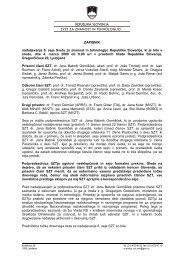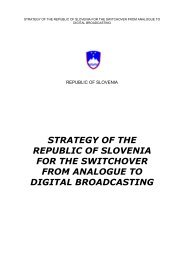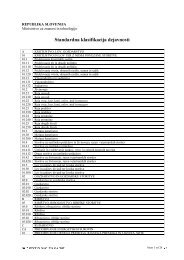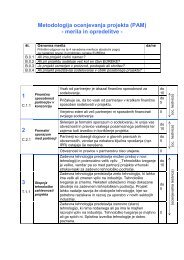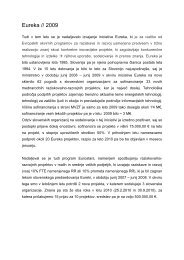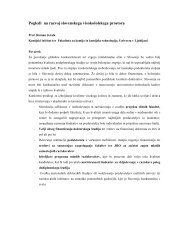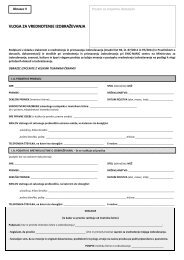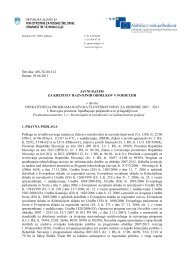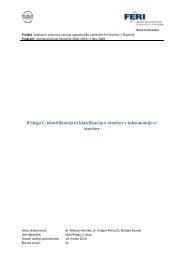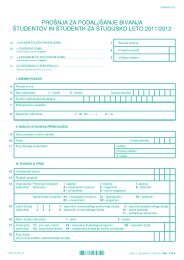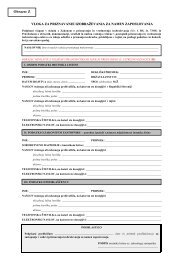Research and Innovation Strategy of Slovenia 2011-2020
Research and Innovation Strategy of Slovenia 2011-2020
Research and Innovation Strategy of Slovenia 2011-2020
- No tags were found...
You also want an ePaper? Increase the reach of your titles
YUMPU automatically turns print PDFs into web optimized ePapers that Google loves.
7 Appendices7.1 Approximated funding for RISS implementationThe basis for the RISS for <strong>2011</strong>-<strong>2020</strong> should be the awareness that spending money forR&D is not primarily a cost but an investment which is expected to increase the value <strong>of</strong>the invested funds by several times in the long term. A well-coordinated <strong>and</strong> targetedapproach to providing adequate support to R&D activity is required for <strong>Slovenia</strong>’s longtermcompetitiveness <strong>and</strong> building a knowledge-based society.The RISS follows an ambitious goal <strong>of</strong> combining scientific, development <strong>and</strong> innovationactivities, which is in accordance with the EU strategy – Europe <strong>2020</strong>. The key measures<strong>of</strong> the proposal are also financially evaluated while others are primarily normative, <strong>and</strong>their direct financial impact is insignificant. The basis for financial planning is to channel1% <strong>of</strong> public funding into R&D until 2012 <strong>and</strong> then 1.2% until <strong>2020</strong>. Increased publicfunding will also enhance multiplier effects in the private sector, where we want toincrease investments in R&D <strong>and</strong> gradually achieve the target investments in R&D in theamount <strong>of</strong> 2.4% GDP until <strong>2020</strong> by means <strong>of</strong> by systemic <strong>and</strong> financial incentives.The resources to achieve the target goals are anticipated from an intense increase <strong>of</strong>national funds, <strong>and</strong> notably by a significant increase <strong>of</strong> investments in R&D throughEuropean cohesion funds. Strategic documents <strong>and</strong> operational programmes for usingthese funds will therefore have to be adapted accordingly, since an important resourcefor funding this area will cease upon expiration <strong>of</strong> the existing financial perspective, <strong>and</strong>will have to be replaced by new resources to the same or larger extent.Breakdown <strong>of</strong> required funding is shown in Table 7.1.Currentprices<strong>2011</strong> 2012 2013 2014 2015Nominal GDP in EUR37,226,883,41339,032,875,52141,466,300,10644,203,535,58647,117,748,333Resources for RISSimplementation577,423,975 580,557,184 590,000,601 620,000,056 650,000,2831% <strong>of</strong> GDP – targetfor investment inR&D until 2015**313,247,865390,328,755***414,663,001***442,035,356***471,177,483***ManagementHigh-quality researchin the public sectorInternationalcooperation12,257,074 12,328,020 12,478,000 12,701,000 13,420,000138,471,130 165,446,225 165,753,601 175,603,056 185,722,28319,593,631 19,230,922 20,184,000 21,228,000 22,270,000Human resources 52,730,169 60,462,461 60,262,000 63,379,000 66,496,000Specialization 150,298,363 117,967,149 117,906,000 120,177,000 127,448,000<strong>Research</strong> infrastructure 25,029,722 41,029,722 45,214,000 52,863,000 60,512,000



